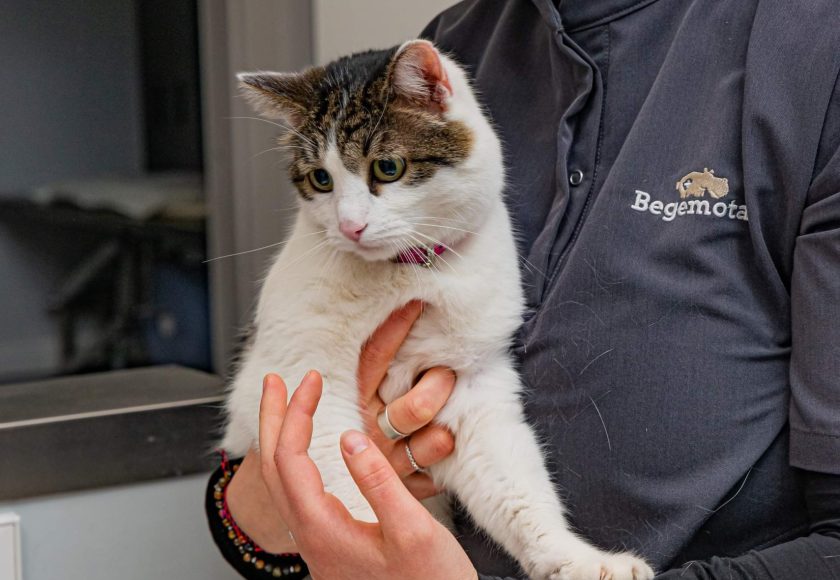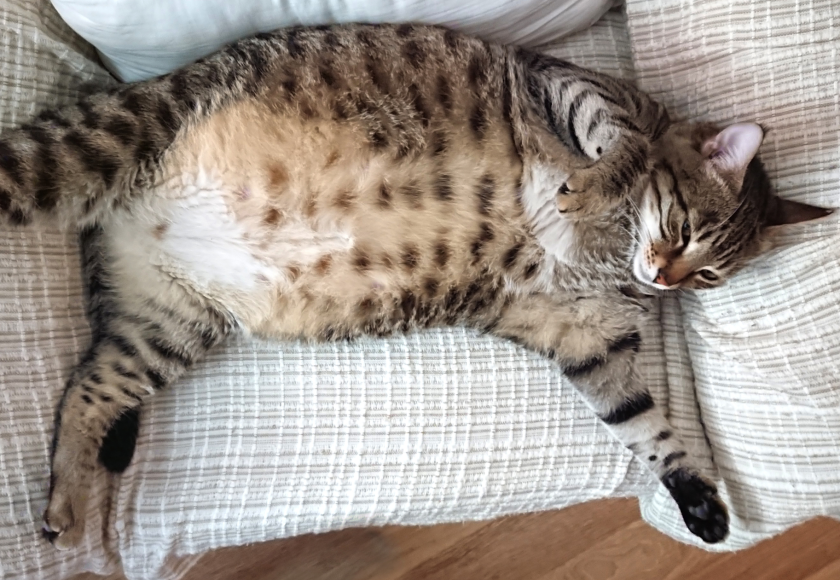Is your cat really feeling well? Even if your pet seems healthy and active at first glance, a cat’s temperature can hide the first signs of health problems. Cats are extremely subtle and often masterfully hide their ailments, so even a slight rise or fall in a cat’s temperature can be a serious sign.
In order to notice a possible danger in time, it is important to know what a cat’s normal temperature is, how to measure it correctly, and what to do if it exceeds or falls below the normal range.
In this article, you will find all the most important information about a cat’s body temperature – from causes to first aid at home.
Table of contents
Normal cat temperature
The normal temperature for a cat usually ranges from 38.0°C to 39.2°C. This temperature is considered standard for both male and female cats, although it may vary slightly depending on age, breed, or individual characteristics. Young kittens often have a slightly higher temperature, while older cats have a slightly lower temperature.
Small fluctuations are normal, but if a cat’s body temperature drops below 37.5°C or rises above 39.5°C, this can be a dangerous sign of inflammation, infection, or other health problems. In such cases, it is important not to wait – changes in a cat’s body temperature can progress rapidly, so it is recommended to act immediately and consult a veterinarian.

How to measure the temperature of a cat or kitten at home?
The most accurate way to measure the temperature of both cats and kittens is rectally, using a digital thermometer. Although the procedure may be somewhat unpleasant for both the pet and the owner, it is the most reliable way to determine the exact body temperature of cats.
Temperature measurement steps
To ensure safe and accurate measurement, follow these steps:
- Prepare a thermometer – use a digital thermometer and have some odorless petroleum jelly or other safe lubricant on hand.
- Ask for help – it can be difficult to hold a restless cat with one hand, so it is better to have another person help you.
- Insert the thermometer carefully – gently lift the tail and insert the thermometer into the anus to a depth of about 1–2 cm. Do not insert it any deeper.
- Wait for the results – hold the thermometer in place until you hear a beep (this usually takes a few seconds).
- Clean the device – wash and disinfect the thermometer after use.
If the temperature exceeds the norm or the cat seems lethargic, it is best not to delay and consult a veterinarian—even slight temperature fluctuations can be a sign of a serious condition.

When is a cat’s temperature considered too high?
If a cat’s temperature exceeds 39.5°C, it is considered too high and may indicate that the body is responding to a certain stimulus – illness, stress, or environmental changes. Although a short-term rise in temperature may be harmless, prolonged or severe fever may signal a serious health problem. Therefore, it is important not only to monitor the temperature readings themselves, but also to assess whether the cat has any additional symptoms.
To recognize a potential danger in time, it is also worth knowing the most common causes of elevated temperature in cats.
Possible reasons for an increase in body temperature
Various factors can cause an increase in a cat’s body temperature, ranging from common infections to external stressors or even poisoning:
- Infections or inflammation. Viral and bacterial diseases often cause an increase in a cat’s body temperature—this is a natural reaction of the immune system.
- Overheating. On hot summer days, cats can overheat, especially if they cannot hide from direct sunlight or do not have enough water.
- Stress or fear. Excitement, travel, or unfamiliar surroundings can temporarily raise a cat’s temperature.
- Poisoning. Certain chemicals, inappropriate food, or poisonous plants can cause a cat’s body temperature to rise.
If you notice that your cat’s temperature is higher than usual, you should watch for other symptoms such as lethargy, breathing difficulties, and loss of appetite. If the condition does not change or worsens, it is necessary to consult a veterinarian.

When is a cat’s temperature too low?
A cat’s body temperature is considered too low when it falls below 37.5°C. This can be a dangerous sign that the body is unable to maintain its heat balance. This condition is called hypothermia and can have serious health consequences, ranging from lack of energy to dangerous internal organ disorders. This usually occurs in cases of severe frostbite, physical exhaustion, or unexpected trauma.
To understand whether your cat may be at risk, it is important to know the most common causes of low body temperature.
The most common reasons why the temperature is too low
There are several main reasons why a cat’s body temperature may fall below normal:
- Hypothermia – if a cat spends a long time in a cold environment or has been wet in low temperatures.
- Chronic diseases – especially kidney failure, exhaustion, or immune system disorders can cause a drop in a cat’s body temperature.
- Shock – severe stress, trauma, bleeding, or pain can disrupt the body’s thermoregulation.
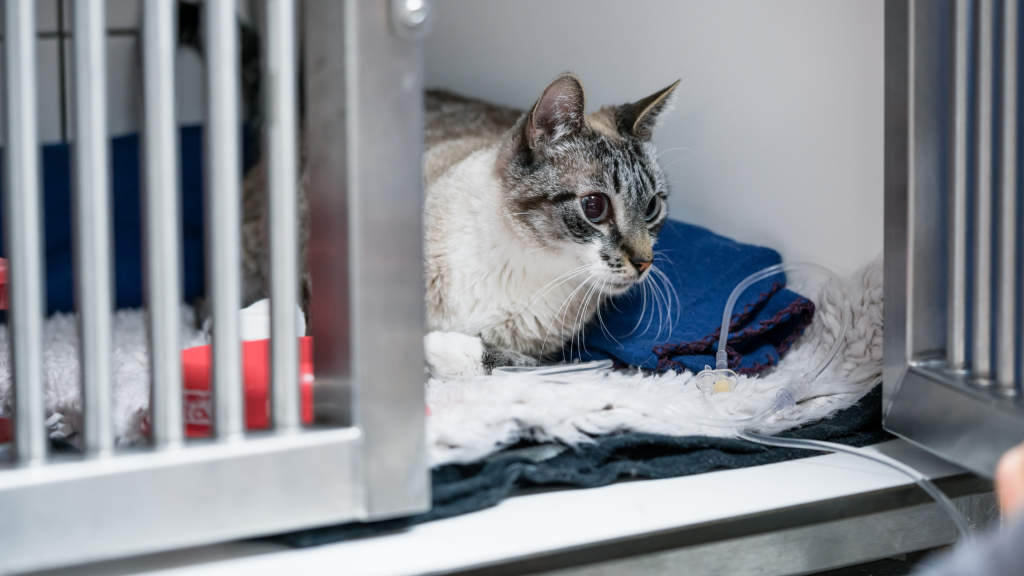
How to regulate the temperature for cats at home?
If the temperature is just above or below normal and your pet still seems fairly active and has no other obvious symptoms, you can try to help them at home. In mild cases, certain measures can help stabilize the condition and prevent further deterioration.
How to reduce the temperature in your home?
If you notice that your cat’s temperature is slightly elevated, it is important to first ensure that it is getting enough fluids. Give it fresh water and move it to a cooler place, away from direct sunlight.
To safely lower your cat’s body temperature at home, you can:
- Gently wet your cat’s coat with lukewarm water or place a damp towel on its body (e.g., on its back or sides).
- Use a fan or air conditioner to lower the ambient temperature. However, avoid direct airflow to prevent the cat from getting cold.
Important: Do not give your cat any medication without your veterinarian’s permission! Many medications intended for humans (e.g., paracetamol or ibuprofen) are toxic to cats and can cause serious complications.
If the temperature does not drop within 30-60 minutes or the cat still seems lethargic or unwell, it is necessary to consult a veterinarian – this may be a sign of a more serious condition.
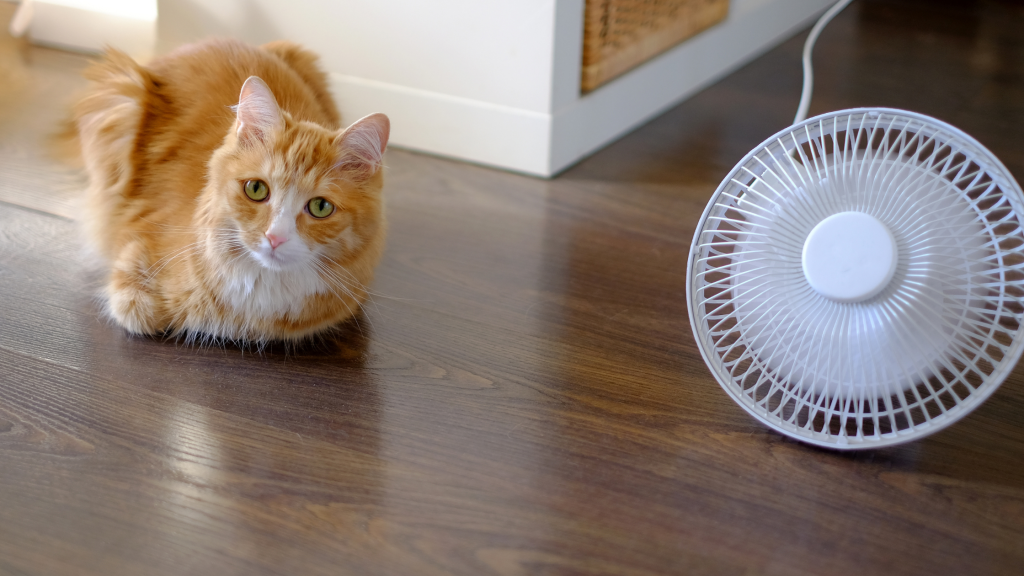
How to raise the temperature in your home?
If your cat’s body temperature has dropped below normal, it is important to respond quickly but responsibly. In milder cases, you can raise the temperature at home – the most important thing is to do it gradually and safely so as not to cause further harm.
- Move the cat to a warm and quiet place.
- Cover it with a warm blanket or use a heating pad, but make sure it is not too hot.
- Gently stroking the cat can stimulate blood circulation and help the body warm up gradually.
- Do not give any medication or stimulants without veterinary advice, as this can be dangerous.
If your cat’s temperature does not rise or she seems weak, contact your veterinarian as soon as possible.
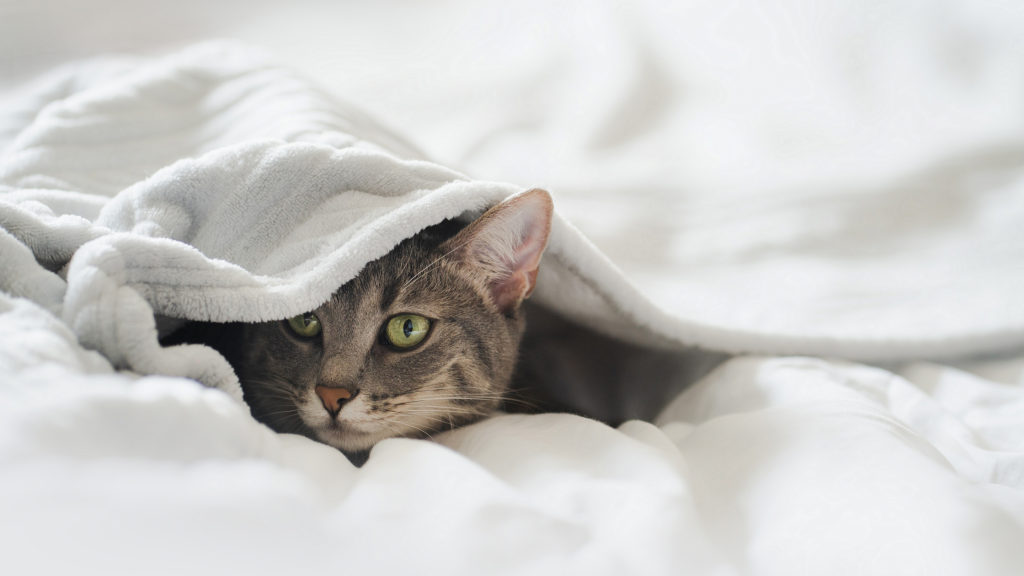
How to protect cats from overheating in summer?
Heatstroke in cats is a dangerous condition in which the cat’s body temperature rises so high that the body is unable to regulate it naturally. This condition can cause heat stroke, damage to internal organs, or even be life-threatening, so it is important to take preventive measures, especially on hot summer days.
Cats are sensitive to heat, especially if they are unable to cool down or get enough fluids. To protect your pet from overheating:
- Provide sufficient water – cats should always have access to fresh water.
- Keep cats in the shade – do not allow them to stay in the sun for too long.
- Use fans or air conditioning – this will prevent overheating in the environment (room or apartment).
- A damp towel or cool surface will help cool your cat down. On particularly hot summer days, consider purchasing a cooling mat for your pet.
Such simple measures help prevent dangerous increases in your cat’s temperature and ensure your pet’s well-being even during the hottest weather.
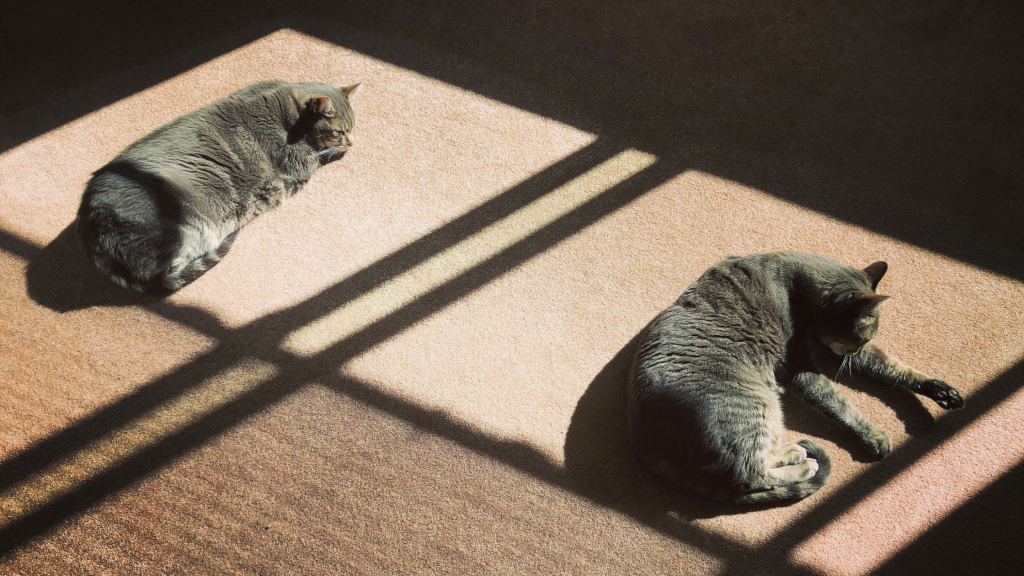
Signs that your cat is overheating
Heatstroke in cats is an extremely dangerous condition, so it is important to recognize the early signs. A cat suffering from heatstroke may behave unusually, and some symptoms require immediate attention.
The most common signs of overheating in cats:
- Lethargy – the cat appears tired, sleepy, and unwilling to move.
- Rapid breathing – the cat is breathing heavily, breathing with its mouth open – panting (which is unusual for cats).
- Excessive salivation – saliva becomes more abundant than usual.
- Hot and dry skin – when you touch the cat, its body feels too hot.
- Red gums – this may be a sign of overheating.
- Vomiting or diarrhea – in more severe cases, the cat may vomit or have diarrhea.
- Loss of consciousness or seizures – these are critical signs that require immediate attention.
If you notice any of these signs, immediately move your cat to a cooler place, offer it water, and if its condition does not improve within 15–30 minutes, contact your veterinarian. A cat’s high temperature is not only uncomfortable, but also a serious threat to its life.
When should you contact a veterinarian?
If your cat’s body temperature deviates from the norm or you notice other worrying signs – lethargy, refusal to eat, changes in breathing or other unusual behavior – it is important not to delay. Timely assistance can help prevent more serious health problems.
The Begemotas veterinary clinic in Vilnius employs experienced specialists who are ready to quickly assess your pet’s condition and provide the necessary assistance. If you have any questions or need an examination, please register by phone or online.



